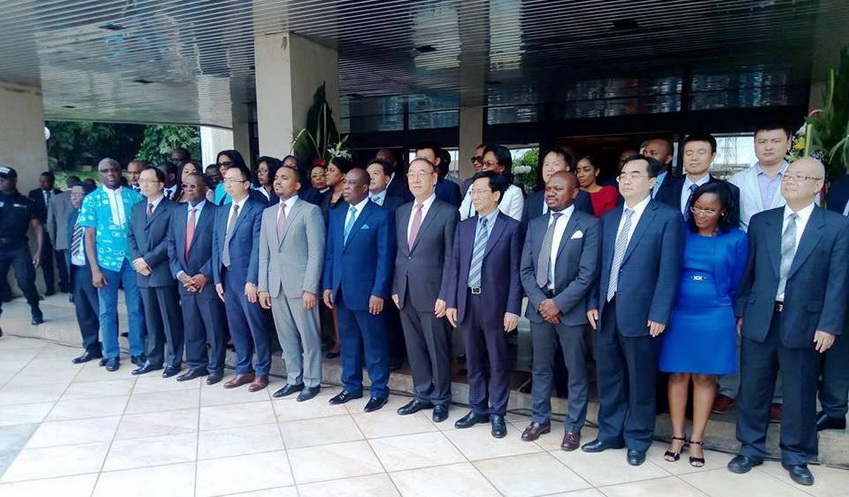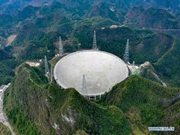


Experts say the submarine optical fibre cable offers capacity for about one and half billion subscribers without saturation. Photo Cameroon.info
The Management Committee of the Cameroon-Brazil Underwater Telecommunications Cable project met in the Cameroonian capital, Yaounde on September 29, 2017 to assess the level of work, which is said to be 60 per cent now. The Chinese team was led by Jiang Zhengxin, Senior Vice President, China Unicom Hong Kong Ltd.
The meeting in Yaounde came three months after a similar one in China. The project entails linking up Fortaleza in northeastern Brazil to the Cameroonian coastal town of Kribi, a distance of 6,000 km. Experts say the submarine optical fibre cable offers capacity for about one and half billion subscribers without saturation.
The Cameroon-Brazil Submarine Cable, CBSC Consortium was created on October 14, 2015 after the signing of a partnership agreement between Cameroon’s telecommunications company, Camtel and China Unicom. The project is worth about 3.6 billion RMB and is financed at 85 per cent by Exim Bank of China. The remaining 15 per cent is borne by China Unicom, Huawei and Camtel.
While the submarine optical fibre is being manufactured in Norway, other equipment is produced in China. The laying of the cable is expected to begin in February 2018 with a ship each leaving from Kribi and Fortaleza to meet at some point in the Atlantic Ocean. The consortium expects to deliver the job by December 2018.
The Management Committee meeting also saw the signing of a Memorandum of Understanding, MOU between Camtel and Equatorial Guinea’s GITGEE on managing the optical fibre cable. Witnessing the event were Jiang Zhengxin, Senior Vice President, China Unicom Hong Kong Ltd; Cao Yunbo, General Manager, China Unicom Brazil; Yang Xueke, Director General, China Unicom Global; Li Chong, Chairman Huawei, Oscar Ondo, Deputy General Manager, GITGEE, Equatorial Guinea and David Nkotto Emane, Camtel General Manager.
The MOU enables Equatorial Guinea to join the Cameroon-Brazil Submarine Cable, CBSC Consortium that manages the South Atlantic Inter-link, SAIL Optical Fibre Cable. Meanwhile, the Management Committee later travelled to Kribi to assess the construction of the submarine cable landing site and other related facilities.
The Cameroon-Brazil underwater optical fibre project is said to be the first of its kind in Africa, though there is a similar one already linking Brazil, Nigeria and Cameroon. The landing site will be Beachman Haul, the connecting point between the Brazil-Cameroon underwater cable and the existing land cable in Cameroon. The Project Coordinator, Alain Ate, explained that the landing point will be a two-metre deep room to host the facilities, including electrical connections and safeguards for the equipment.
According to Mbock Lebock, the Works Supervisor, another facility at Camtel Kribi office will link up underway optical fibre cables from Brazil through Nigeria to Cameroon and the one from Brazil to Cameroon directly.
*Kimeng Hilton Ndukong, a contributor to People’s Daily Online, is Sub-Editor for World News with Cameroon Tribune bilingual daily newspaper in Cameroon. He is currently a 2017 China-Africa Press Centre, CAPC fellow.

 Award-winning photos show poverty reduction achievements in NE China's Jilin province
Award-winning photos show poverty reduction achievements in NE China's Jilin province People dance to greet advent of New Year in Ameiqituo Town, Guizhou
People dance to greet advent of New Year in Ameiqituo Town, Guizhou Fire brigade in Shanghai holds group wedding
Fire brigade in Shanghai holds group wedding Tourists enjoy ice sculptures in Datan Town, north China
Tourists enjoy ice sculptures in Datan Town, north China Sunset scenery of Dayan Pagoda in Xi'an
Sunset scenery of Dayan Pagoda in Xi'an Tourists have fun at scenic spot in Nanlong Town, NW China
Tourists have fun at scenic spot in Nanlong Town, NW China Harbin attracts tourists by making best use of ice in winter
Harbin attracts tourists by making best use of ice in winter In pics: FIS Alpine Ski Women's World Cup Slalom
In pics: FIS Alpine Ski Women's World Cup Slalom Black-necked cranes rest at reservoir in Lhunzhub County, Lhasa
Black-necked cranes rest at reservoir in Lhunzhub County, Lhasa China's FAST telescope will be available to foreign scientists in April
China's FAST telescope will be available to foreign scientists in April